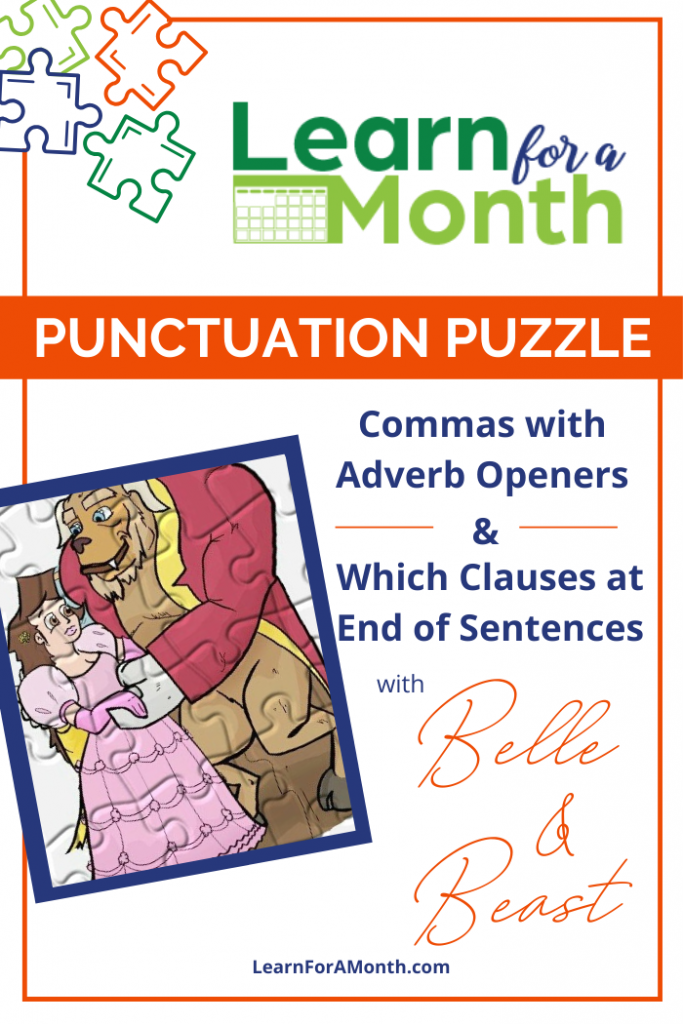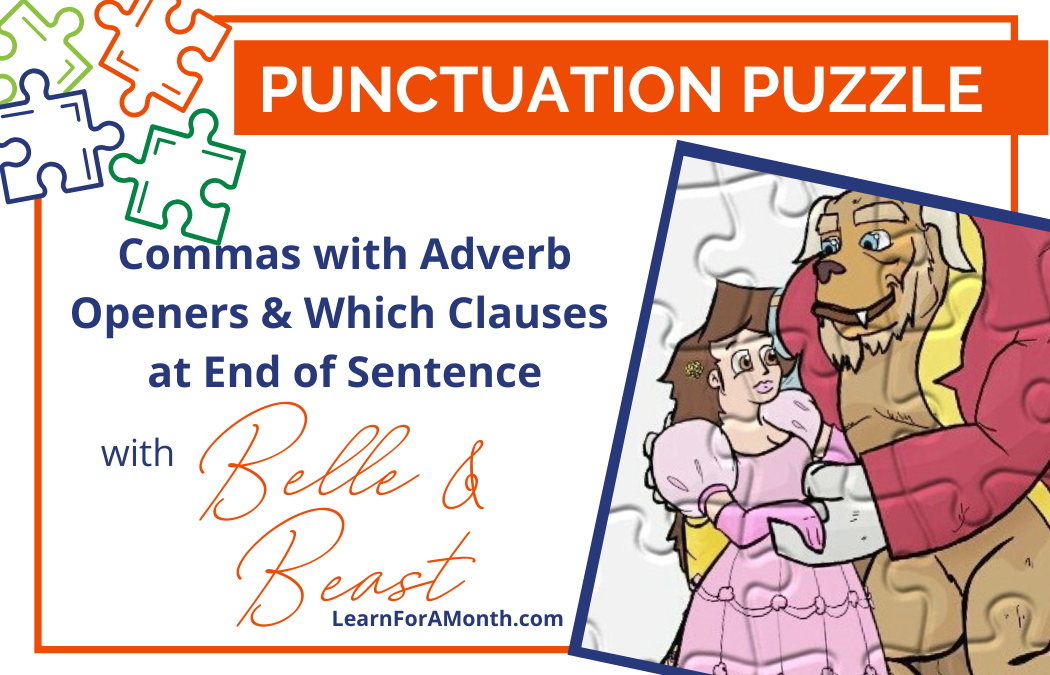Since it is the first of September, I assume that you have started school (or maybe Tuesday after Labor Day?) and are having review of many of last year’s concepts. And part of that might be comma review. I have a love-hate relationship with commas (though mostly love!). I love what they do for clarity, sentence rhythm, and reading aloud. (I read aloud to my kids for two to four hours a day for almost thirty years—commas become very important to the reader with that much reading aloud!) The hate part (though I guess that is a strong word for someone who loves grammar and language arts as much as I do!) is how subjective they are. This makes commas especially challenging for students to learn (and for teachers to teach!).
I am going to be sharing my Comma Chart and other teaching helps for this challenging topic in future blog post, but I have found three tips for teaching commas:
- Teach them using one of their purposes—to give an auditory (or mental) pause when reading. I tell my students that commas are like yellow lights and periods are like red lights. I emphasize this by acting like I’m falling off my chair during the pause (with voice inflection—super important also) until the rest of the sentence continues: When the couple grew to love each other, (…….pause and voice inflection) they knew their love would last forever.
2. Teach them emphasizing that commas are generally used for non-essential information. Whenever possible, I have my students cover up the opener that has a comma following it or the “dropped in” info in the middle surrounded by commas and read the sentence without those words. This shows them that the sentence is still a sentence without that info—thus, the comma is setting non-essential information apart. The sentence is a sentence without the “comma-ed” info!
3. Teach them that commas separate ideas, words, or phrases. This is trickier than that sentence sounded, but to start with, I show them that we can’t have words or ideas running together. (It is way more than that—like which describers need commas between, the Oxford comma, etc., but this is a start.)
Today’s Punctuation Puzzle deals with the pausing rule (sentence opener), non-essential rule (which clauses at the ends of sentences) and the “joining” rule (creating a compound sentence by combining two sentences into one). I think you will find it helpful for learning those three tips above!

PUZZLE:
Gradually the Beast and Belle grew to love each other, and joy began to return to the castle which had remained ruined and gloomy, for so long.
The answer?
Gradually, the Beast and Belle grew to love each other, and joy began to return to the castle, which had remained ruined and gloomy for so long.
A. Adverb Openers
- The first error we can spot relates to the very first word of this sentence.
i. So, let’s start by identifying what part of speech the word “gradually” is in this sentence.
ii. Our first clue is the –ly ending of this word.
iii. What part of speech usually ends in an –ly? That’s right, an adverb.
2. However, there are some adjectives that end in –ly, so let’s check if this is actually an adverb.
i. We know that adjectives modify nouns and answer questions like, What kind? and How many?
ii. Meanwhile, adverbs can modify verbs, adjectives, or adverbs and respond to questions such as When?, Where?, and How?
3. Since we suspect we are dealing with an adverb, let’s test if “gradually” tells us when, where, or how the Beast and Belle grew:
a. When did the Beast and Belle grow? Gradually. – Doesn’t make sense
b. Where did the Beast and Belle grow? Gradually – Doesn’t make sense
c. How did the Beast and Belle grow? Gradually – Makes sense! We have an adverb.
4. Since “gradually” is an adverb and it comes at the beginning of the sentence, it is an adverb opener.
i. Every adverb opener must be followed by a comma.
ii. Also, since the subject—the Beast—comes right after this adverb, we know our adverb opener is only one word.
iii. Therefore, we can place our comma right after “gradually”:
Gradually, the Beast and Belle grew to love each other, and joy began to return to the castle which had remained ruined and gloomy, for so long.
B. Which Clauses
- The next problem in this sentence has to do with the word “which. “
ii. “Which” is often the opening word of a clause, and a clause that starts with “which” is known as a which clause.
ii. There are various rules for handling which clauses, depending on where they are in a sentence. However, we are a dealing with a which clause at the end of a sentence. - When a which clause comes at the end of a sentence, a comma must always be placed between the rest of the sentence and the which clause.
i. The reason is that when you are reading a sentence out loud and you reach a which clause, you have to pause. The comma shows you that a pause is there.
ii. So, adding this comma, our sentences looks like this:
Gradually, the Beast and Belle grew to love each other, and joy began to return to the castle, which had remained ruined and gloomy, for so long.
C. Commas
1. The final item that must be corrected in this sentence has to do with a comma. Commas, most often, are used to show a pause (as I just did). In fact, we just discussed using a comma to show a pause with a which clause.
2. However, an unnecessary comma creates an uncomfortable situation for your reader, by forcing them to pause when there is no reason to. That is exactly what is happening inside our which clause:
Which had remained ruined and gloomy, for so long.
3. Do you see how the comma before the word “for” creates an awkward pause? Let’s remove that comma and get rid of that pause:
Gradually, the Beast and Belle grew to love each other, and joy began to return to the castle, which had remained ruined and gloomy for so long.
We are now error-free!


Trackbacks/Pingbacks